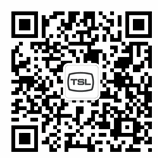EXPLORE THE HUB: Hot Topcis and Deep Dives | Ebooks and Technical Application | Case Studies
Where's the remote? The on-going development of loudness monitoring and measurement
INTRODUCTION - WHAT IS LOUDNESS?
Television sound is often a more common cause of complaint from viewers than picture quality. Audibility - or intelligibility - has been a particular issue in recent years, with mumbling actors or dialogue drowned out by music and effects. A longer-standing problem is loudness, which forces people to keep adjusting the volume on their sets because it fluctuates so much.
Loudness is the discrepancies in sound levels between one audio signal and another. The most recognisable instance is the transition from a drama programme to a commercial or interstitial. In the days when metering was on either PPMs (peak programme meters) or VU (volume unit) meters, the main show could register the same peak level at a randomly selected point as the ad or promo. But because dramas have a much wider dynamic range and tend not to be as heavily compressed as commercials, they can sound quieter.
This is known as 'perceived volume', meaning we hear sounds at different levels despite what an audio meter tells us. Loudness can also occur within a programme when the dynamic range goes from, for example, gentle country sounds to loud explosions and a full orchestra score. Either way it meant viewers had to keep adjusting the volume, which, in the days before remote controls, forced them to get up out of the armchair and walk across the room to the TV.




